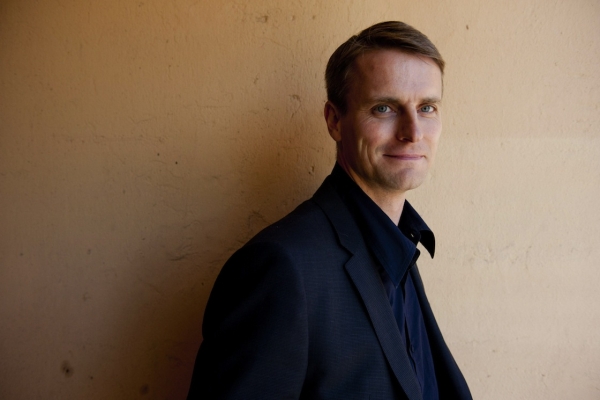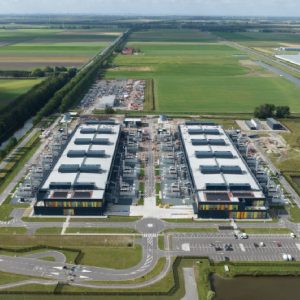
"SaaScified", that was how MariaDB‘s CEO Patrik Sallner described the company.
According to the CEO, the global database market is about $35 billion a year in revenues and that is dominated by four companies: Oracle, Microsoft, IBM and SAP.
With its headquarters in Helsinki, MariaDB has reached out to the world, and works now alongside Google, IBM and even the EU.
MariaDB has been named after its founder, Ulf Michael Widenius, youngest daughter. The CEO said: "MySQL is named after his older daughter, her name is My [reads ‘Mu’ in Finish], and Maria it’s his younger daughter."
CBR spoke to Patrik Sallner a "month or two" before the release of MariaDB 10.1 which will feature more encryption tools.
CBR: How important is open source to MariaDB?
PS: Open source is really becoming more and more common. Firstly, Linux is the most common operating system across any platform. Whether we talk about data centre servers, Android, or even car systems, they are Linux based. That is all open source, and that has happened first in OSs and now it is spreading to virtualisation software and databases.
With open source software, because it is a cloud cooperative effort, we can have multiple different people participating in the development. This means there is more innovation and security issues which can be fixed more quickly.
Another driving force is cloud infrastructure. There is a lot of cost saving in cloud and all cloud stacks are pretty much built on open source software. So as cloud becomes more pervasive, we have much more use of open source.
In addition, open source is pushed by big data. The volumes are so immense that if companies charged per server, it would just become too expensive and would not make any sense. We see this trends of increased innovation, better need for security, more cloud adoption, big data, all driving the increasing use of open source..
CBR: How can MariaDB leverage information on a SaaS environment?
PS: We started very early focusing on requirements for the really high end software to service deployment. We had two visible MariaDB users: Wikipedia and Google.
Wikipedia has billions of searches every day and all those searches go into a MariaDB database. The online encyclopaedia is an example of a SaaS, people do not install Wikipedia on their machine. It is a service that is running from the cloud.
As for Google, all the searches, again billions a day, are also stored in MariaDB database. We have worked with both companies to optimise the performance in a SaaS environment features in MariaDB.
An important thing in SaaS is high availability. If Google goes down for an hour, many people would get frustrated.
On the database side, we focus a lot on replication allowing for data stored in a server to be replicated all the time to other servers, so that in case of one server going down, companies can quickly switch over to another one, keeping things always working.
Sometimes these two servers can be in the same place, in the same data centre, but companies also need to have replication in another site to avoid local power outages or earthquakes for instance. That gives them disaster recovery or geographic redundancy.
CBR: You have also done work with scaling. Can you develop this using Google and Wikipedia as an example?
PS: Google and Wikipedia are huge. They have their own teams to solve problems by themselves. Then we have thousands of other companies that bump into this scaling problem. Start-ups for instance, do not know how big their company is going to be and they do not want to invest in IT too early.
As they develop, they have some surprises: if a start-up launches a new game, and millions of people try to download it on the first day, the server goes down and they need to quickly find solutions. They will not recruit the best talent from Silicon Valley, they need to get something quick, what we do is sort of productising the innovations that companies like Google and Wikipedia have made to roll them out to thousands of other companies.
CBR: What about encryption? Also, what has Google’s role been in this field?
PS: Google started using MariaDB about two years ago; they are an example of a company that has contributed back with a lot of code to MariaDB.
Security is a pain point for all organisations nowadays, especially with data. We are a small company, we cannot develop the world’s best security software, but Google is constantly being hacked by the Chinese, North Koreans, and other competitors. They have developed good security software, and they have realised that to make their security software even better it is actually good to release it to the community.
That is why they contributed to MariaDB, and we were able to roll it out and then we have a lot of other companies that can actually pick up on that, apply the same encryption and use it for their benefits.
Another interesting thing with Google, is the Google Summer of Code which any engineering student, anywhere in the world, can apply for and they will create solutions remotely. For the past two years, we had many students developing new features for MariaDB. This year there will be eight different projects, with students developing new things with Google and MariaDB. These are the whizz kids of the world.
CBR: Could you explain the MariaDB MaxScale solution?
PS: Max Scale is a component that is not in the database server, it is a separate tool. MariaDB is not an application; it is what is called infrastructure and it is used as part of building an application.
In order to make the usage and development of MariaDB easier, we launched Max Scale, a gateway that sits between the database and the application. When someone scales databases, and has an application that needs huge volume, they need to have many databases next to each other. They cannot just have one because as it gets bigger and bigger it becomes immense.
Cloud is distributed, so we can distribute a huge processing task across thousands of servers and they all work together to solve one problem. However, to distribute that workload sometimes in the application it can be quite challenging for the database.
From the application point of view, it thinks there is only one database and from the database doesn’t have to understand exactly what the application is doing, because Max Scale is sort of managing that complexity, almost like an abstraction layer.
CBR: What is your collaboration with IBM?
PS: With IBM we have a sort of joint mission to bring to the market two technologies: MariaDB and IBM’s Power servers. After selling most of its hardware business to Lenovo, the Power servers are now in IBM almost like a mass-market product, which they are positioning for cloud users on social media, mobile and all this sort of cutting edge applications that are growing. They have this Power on Linux strategy and MariaDB is one of the three applications they are using.
With IBM we boosted performance of MariaDB on Power so it’s more than twice of what a user would get from traditional server solutions most people use bringing huge cost savings and performance improvement for customers.
CBR: How can MariaDB leverage IoT connected solutions?
PS: There is an interesting EU project, ‘Wind Power’ we are involved with. This EU funded venture is putting sensors in the blades of the windmills. This is a close to IoT application because a lot of the intelligence is now measuring the strains of the blades further optimising exactly which angle to take at the wind, so it can always maintain the maximum productivity for the windmill without causing stress for the system.
The EU project needed to have each of the different technology vendors represented, so now we are driving the database capabilities there.






